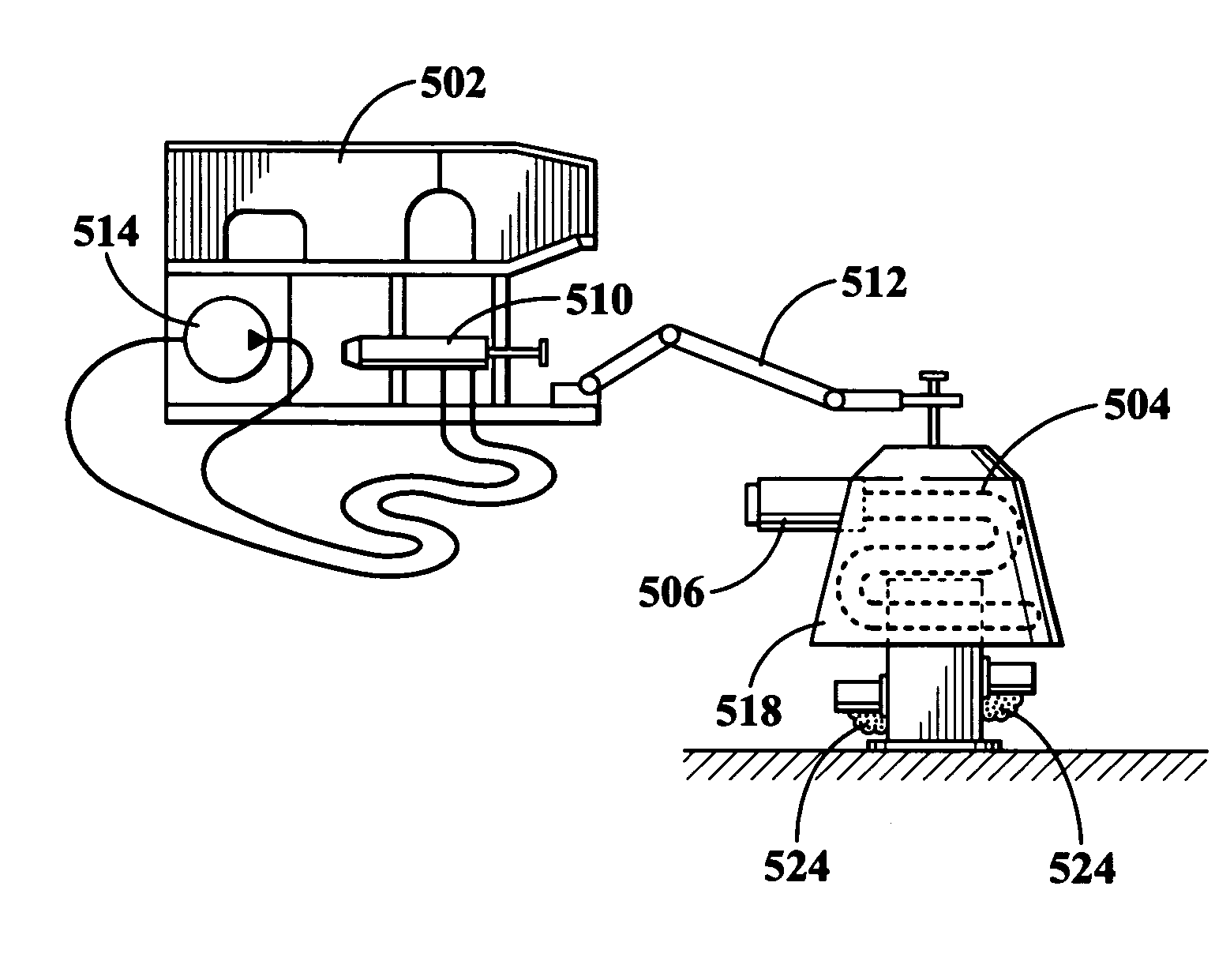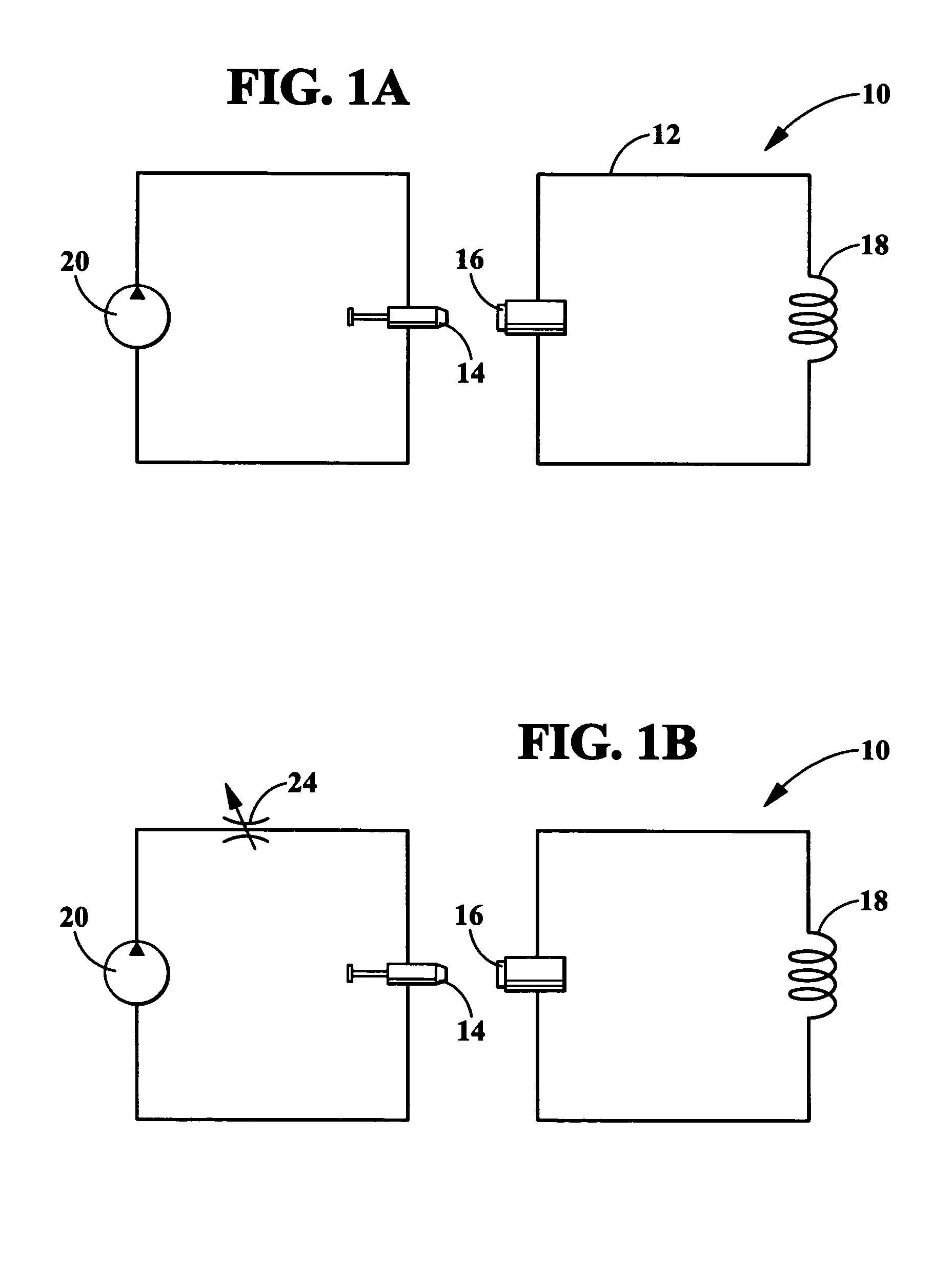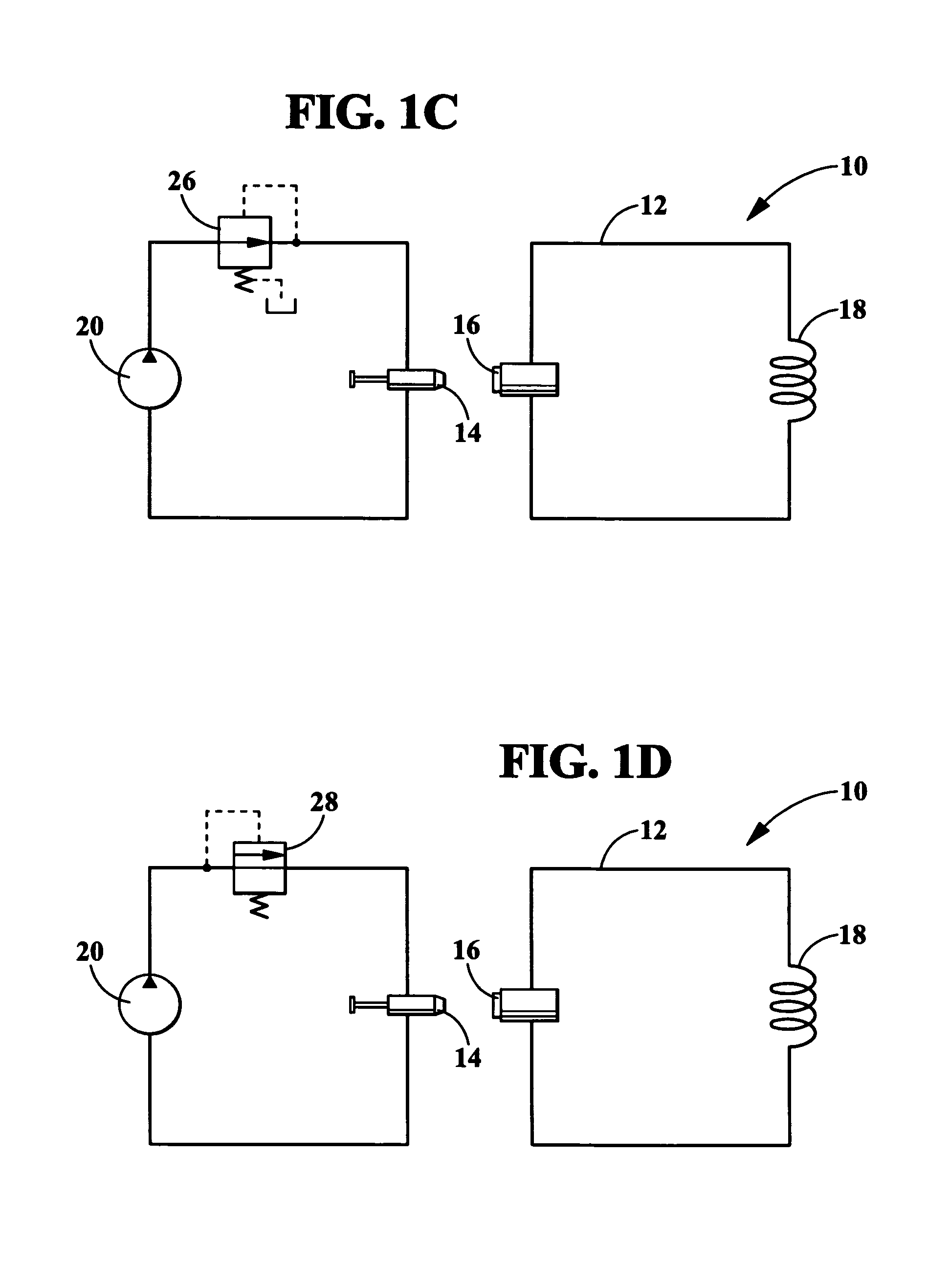Hydraulic friction fluid heater and method of using same
a technology of hydraulic fluid and heater, which is applied in the direction of fluid friction for heating, insulation, borehole/well accessories, etc., can solve the problems of affecting hydrate and wax formation, hydrate formation is a problem, and the temperature of the circulating fluid is increased. , to achieve the effect of increasing the temperature of the circulating fluid
- Summary
- Abstract
- Description
- Claims
- Application Information
AI Technical Summary
Benefits of technology
Problems solved by technology
Method used
Image
Examples
Embodiment Construction
[0024]The hydraulic friction fluid heater of the present invention is based on the fluid power equation 1:
Power=Pressure×Flowrate, (1)
where a change in pressure or flowrate will produce a change in power, and a power change is manifested as heat transfer as reflected in equations 2 and 3:
Heat Transfer=Power Drop=Pressure Drop×Flowrate, or (2)
Heat Transfer=Power Drop=Pressure×Flowrate Increase. (3)
[0025]As described with respect to the illustrative embodiments described herein, a hydraulic friction fluid heater generates friction heat by circulating fluid through tubing and other pressure-reduction devices. There are three basic scenarios for utilizing the teachings of the present invention. The first scenario is a closed loop configuration in which heat is generated within a closed loop, the heat then being transferred to the desired structure to be heated. The second scenario includes a dual loop system with isolation between the fluids in each loop, where the heat generated ...
PUM
 Login to View More
Login to View More Abstract
Description
Claims
Application Information
 Login to View More
Login to View More - R&D
- Intellectual Property
- Life Sciences
- Materials
- Tech Scout
- Unparalleled Data Quality
- Higher Quality Content
- 60% Fewer Hallucinations
Browse by: Latest US Patents, China's latest patents, Technical Efficacy Thesaurus, Application Domain, Technology Topic, Popular Technical Reports.
© 2025 PatSnap. All rights reserved.Legal|Privacy policy|Modern Slavery Act Transparency Statement|Sitemap|About US| Contact US: help@patsnap.com



